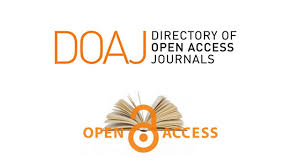
| Review Article | ||||||||||||||||||||||||||||||
AJVS. 2021; 14(1): 14-28 Utilization of Herbal Remedies to Improve Ruminant Performance: A Review Kifah Odhaib, Measem Alallawee, Zainab AL-Mousawi.
| ||||||||||||||||||||||||||||||
| How to Cite this Article |
| Pubmed Style Odhaib K, Alallawee M, AL-Mousawi Z. Utilization of Herbal Remedies to Improve Ruminant Performance: A Review. AJVS. 2021; 14(1): 14-28. doi:10.37940/AJVS.2021.14.1.2 Web Style Odhaib K, Alallawee M, AL-Mousawi Z. Utilization of Herbal Remedies to Improve Ruminant Performance: A Review. https://www.anbarjvs.edu.iq/?mno=302657461 [Access: January 06, 2024]. doi:10.37940/AJVS.2021.14.1.2 AMA (American Medical Association) Style Odhaib K, Alallawee M, AL-Mousawi Z. Utilization of Herbal Remedies to Improve Ruminant Performance: A Review. AJVS. 2021; 14(1): 14-28. doi:10.37940/AJVS.2021.14.1.2 Vancouver/ICMJE Style Odhaib K, Alallawee M, AL-Mousawi Z. Utilization of Herbal Remedies to Improve Ruminant Performance: A Review. AJVS. (2021), [cited January 06, 2024]; 14(1): 14-28. doi:10.37940/AJVS.2021.14.1.2 Harvard Style Odhaib, K., Alallawee, . M. & AL-Mousawi, . Z. (2021) Utilization of Herbal Remedies to Improve Ruminant Performance: A Review. AJVS, 14 (1), 14-28. doi:10.37940/AJVS.2021.14.1.2 Turabian Style Odhaib, Kifah, Measem Alallawee, and Zainab AL-Mousawi. 2021. Utilization of Herbal Remedies to Improve Ruminant Performance: A Review. Al-Anbar Journal of Veterinary Sciences, 14 (1), 14-28. doi:10.37940/AJVS.2021.14.1.2 Chicago Style Odhaib, Kifah, Measem Alallawee, and Zainab AL-Mousawi. "Utilization of Herbal Remedies to Improve Ruminant Performance: A Review." Al-Anbar Journal of Veterinary Sciences 14 (2021), 14-28. doi:10.37940/AJVS.2021.14.1.2 MLA (The Modern Language Association) Style Odhaib, Kifah, Measem Alallawee, and Zainab AL-Mousawi. "Utilization of Herbal Remedies to Improve Ruminant Performance: A Review." Al-Anbar Journal of Veterinary Sciences 14.1 (2021), 14-28. Print. doi:10.37940/AJVS.2021.14.1.2 APA (American Psychological Association) Style Odhaib, K., Alallawee, . M. & AL-Mousawi, . Z. (2021) Utilization of Herbal Remedies to Improve Ruminant Performance: A Review. Al-Anbar Journal of Veterinary Sciences, 14 (1), 14-28. doi:10.37940/AJVS.2021.14.1.2 |









